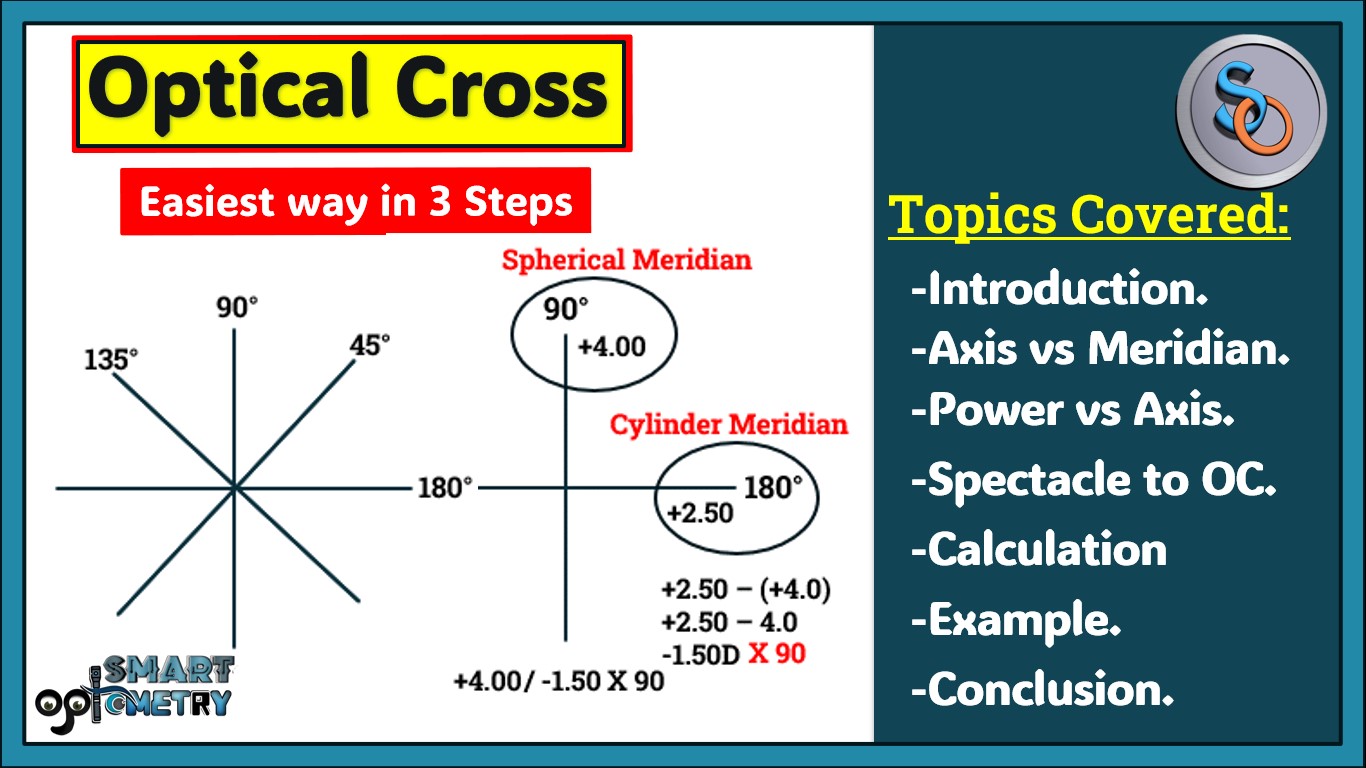What is an Optical Cross?
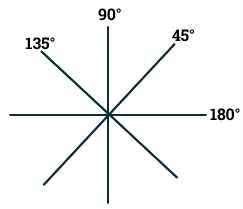
- Optical cross is a Cross (“X”) used during retinoscopy to distribute the power meridian wise.
- Two straight line is used to draw the Optical Cross at 90 apart from each other.
- These two lines represent two principal meridians of eye.
- Most people have vertical (90°) & Horizontal meridian (180°) as principal meridian. Thus, optical cross typically looks like Plus (+).
- If principal meridians are not Vertical (90°) & Horizontal (180°) then generally we draw another pair of straight lines to represent the principal meridians and then it looks like a Star (*).
- Vertical & Horizontal lines are then works as a reference mark.
Why Power is 90° apert from Axis?
Axis:
- Axis indicates the position of Retinoscopic Streak.
Meridian:
- Meridian is where the power is situated.
- The difference between axis and meridian is 90°.
That means power present 90° apert from the axis.
- In Streak retinoscopy, the retinoscopic reflex is “Streak Shape”.
- Due to streak shape, it’s easier to check power in vertical meridian when the streak is horizontal and moves Up & Down.
- Also, it’s easier to check power in horizontal meridian when streak is vertical and moves Right and Left.
- That’s why power always situated 90° apert from axis.
Axis vs Meridian:
In keratometry, we don’t use any streak light source that’s why keratometric power is directly written without any cross, like
K1 = 44 D @ 90°
K2 = 46 D @ 180°
- Means, Vertical meridian has 44D and horizontal meridian has 46D.
- So, “X” means power situated in 90° apert from the given axis and “@” means power situated in the given axis.
- Simply, “X” indicates the axis and “@” indicates the meridian.
- So, -2.0 X 90 means, when retinoscopic streak were 90° or vertical, 180° horizontal meridian is neutralized with -2.0D trial lens.
- 44D @ 90 means, vertical or 90 meridians has 44D power that is found in keratometry.
Spectacle Power to Optical Cross
How to identify principal meridians from Spectacle Power?
- Now, let’s take a prescription power and distribute in optical cross.
OD = -2.0/-1.0 x 70°
- Here, two principal meridians are 70° & 160°
- As we already know meridian present 90 apert from the axis so one meridian will be:
- Prescription Axis + 90° or 70° + 90° = 160°
- We also know that difference between two meridian is 90°, so another meridian will be:
- 160° + 90° = 250° or 160° – 90° = 70°.
- Axis range of our eyes is 0 to 180, so 2nd meridian will be 70°.
- So, One Meridian is 160° & Another Meridian is 70°
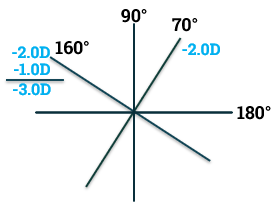
Let’s, draw these meridians in optical cross form.
- -2.0D is spherical power so it will be in both meridians.
- And cylinder power is -1.0D X 70° axis, so power will be here in 160°.
- So, -2.0/-1.0 x 70° means, 70 meridian has -2.0D and 160 meridian has -3.0D.
Optical Cross to Spectacle Power:
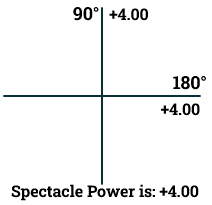
- If both meridians have same power in optical cross, then there is no astigmatism or cylinder power (Spherical Refractive Error).
- If Power in both meridian is different, then astigmatism or cylinder power is there.
- When cylinder power is there, one meridian is spherical, and another meridian is Cylinder.
Spherical Power:
- Take any meridian as spherical meridian and write the power of that meridian as spherical power.
Cylinder Power:
- The difference between the power of cylinder meridian and spherical meridian will be cylinder power.
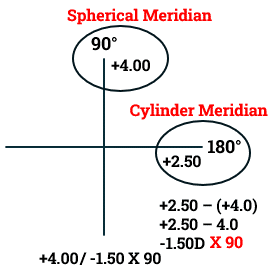
- Check Our Courses: Ophthalmic Instrumentation, Clinical Refraction, Contact Lens, Binocular Vision, Dispensing Optics, MCQs in Optometry
- Download our App “Optometry Notes & MCQs” from Google Play Store.

